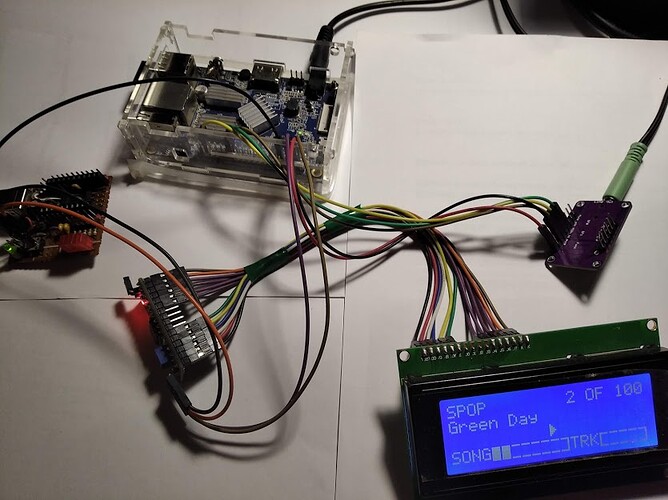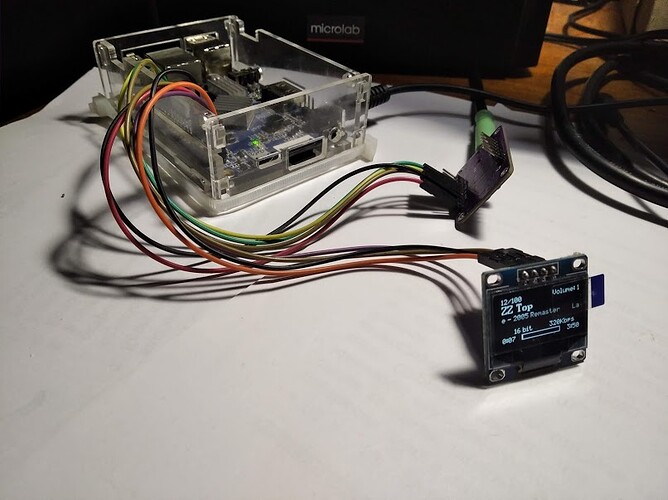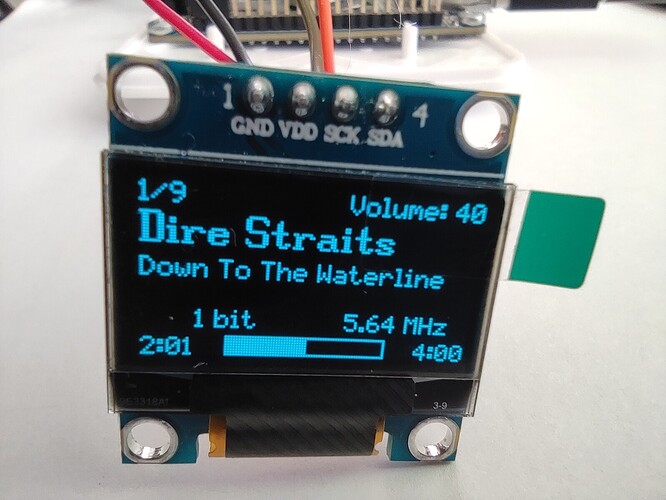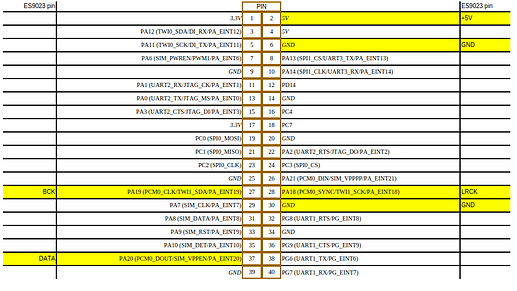Thank you very much!
I will try next week-end when I will came home 
The new version Volumio 2.861 (Orange Pi Lite, Orange Pi PC, Orange Pi One).
Hi,
First thank you so much to all for this orangepi volumio builds. My orangepi one board are now working as a champ with volumio2.
I need some (maybe much) help because I want to add a rotary encoder (I have a cheap ec11 type) to be able to locally power on/off the board and to select sources, etc…, but I cannot integrate the hardware layer for that device on that orangepi volumio builds from @VyacheslavS.
I try to add the overlay configuration needed but cannot figure out how to propperly manage.
I find a overlay gpio-rotary.dts (comes from here : dac/gpio-rotary.dts at master · teknoid/dac · GitHub) that seems is working on other armbian sunxi device (orangepi too) but cannot integrate using user overlay method described on armbian help Device Tree overlays - Armbian Documentation.
I copied the file to the board, but when I try launch “sudo armbian-add-overlay gpio-rotary.dts”, get command not found and seems that is because build kernel are not properly compiled to suport custom user overlays, but I don´t know how to propper correct the issue if not rebuilding all whole compilation for the orangepi one board.
Other thing I found is the “armbian-config” utility seems not installed on this builds, and I think will be really useful for some setups and configurations.
Hope can receive some help, and maybe will be better (after testing) to add permanently to this orangepi builds this kind of rotary switch that I´m sure other people like use in their volumio devices.
Cheers
The command fails because the OS is not Arambian. This operating system is based on Debian. There is only the kernel Arambian.
The kernel are supported custom user overlays.
You can find another way to build from the user overlay source code yourself.
I don’t have a rotary encoder and I can’t test its operation.
Again, I repeat - this is a different OS.
@jirm , сheck the files in the archive:
sun8i-h3-gpio-rotary.zip (1.2 KB)
Thank you so much @VyacheslavS for your quick reply.
So sorry for my mistake, about thinking this build are armbian based.
So if I well understand this orangepi builds are custom debian from your own creation ?
If so, you can give any guidance that how to integrate on that build to overlays the rotary switch device ?.
And you think are any chance to do it without need to build again all whole os instalation from scratch ?.
I see your file and seems tha only that this two .dts and .dbo files are the only required to integrate on overlays, but (I’m not a linux expert) they are any guide to propper aggregate that files on the device that I have yet running?
Again so many thanks,
Best regards
@jirm You would have to compile a .dts file to a .dtbo – so prepare the .dts and then install
the device-tree-compiler package to compile it.
So something along these lines for the most simple case:
sudo apt udate && apt install device-tree-compile
dtc -O dtb <file>.dts -o <file>.dtboThanks @ashthespy for your reply.
Seems .dtbo file are in the last zip (sure @VyacheslavS compilate it maybe from the .dts file I provided), so question now are ?
Maybe is enough add both .dts and .dtbo files that you provide in that zip file to “/boot/user_overlays” directory and modify “armbianEnv.txt” to load it ?.
You think I need do some more to enable in my running orangepi board?. I don´t have chance to test it until tomorrow, so any guidance to rigth direction will be very good.
Regards
You only need the to add the compiled <file>.dtbo file to /boot/overlay-user and then enable it in /boot/armbianEnv.txt by adding it to the user_overlays=<file> line.
Woooow seems closer to I have it working .
Thank you so much @ashthespy . Tomorrow I test it and then I post results here.
Best regards
Hi,
Success !!!
Rotary encoder is now loaded with kernel overlays.
Only needed first “tweek” renaming from .dbt to .dbto compiled file from zip provided, then follow instructions adding the compiled <file>.dtbo file to /boot/overlay-user and then enable it in /boot/armbianEnv.txt
Booting device U-Boot dump debuging over uart :
Executing script at 43100000
U-boot loaded from SD
Boot script loaded from mmc
307 bytes read in 3 ms (99.6 KiB/s)
5495909 bytes read in 264 ms (19.9 MiB/s)
7645088 bytes read in 367 ms (19.9 MiB/s)
Found mainline kernel configuration
28283 bytes read in 7 ms (3.9 MiB/s)
374 bytes read in 2 ms (182.6 KiB/s)
Applying kernel provided DT overlay sun8i-h3-i2c0.dtbo
1347 bytes read in 4 ms (328.1 KiB/s)
Applying user provided DT overlay sun8i-h3-i2s0-master.dtbo
1355 bytes read in 3 ms (440.4 KiB/s)
Applying user provided DT overlay sun8i-h3-gpio-rotary.dtbo
4155 bytes read in 3 ms (1.3 MiB/s)**
Applying kernel provided DT fixup script (sun8i-h3-fixup.scr)
Executing script at 44000000
Loading init Ramdisk from Legacy Image at 43300000 …
Image Name: uInitrd
Image Type: ARM Linux RAMDisk Image (uncompressed)
Data Size: 5495845 Bytes = 5.2 MiB
Load Address: 00000000
Entry Point: 00000000
Verifying Checksum … OK
Flattened Device Tree blob at 43000000
Booting using the fdt blob at 0x43000000
EHCI failed to shut down host controller.
Loading Ramdisk to 49ac2000, end 49fffc25 … OK
Loading Device Tree to 49a52000, end 49ac1fff … OK
Starting kernel …
Still untested, because the only “ready to go” volumio module that I find for this kind of device seems is a pluggin from @Saiyato that seems is installed propperly but for some reason cannot not working and force my volumio continous restarting volumio process… but that will be next story.
Thanks so much all people here and specially @VyacheslavS and @ashthespy
I use the image from @VyacheslavS version Volumio2.806-2020-08-22-orangepipc.
The Rotary Encoder Plugin from @Saiyato is installed. I use an EC11 encoder with a button. Everything is working.
Connection diagram

Settings in volumio, for example
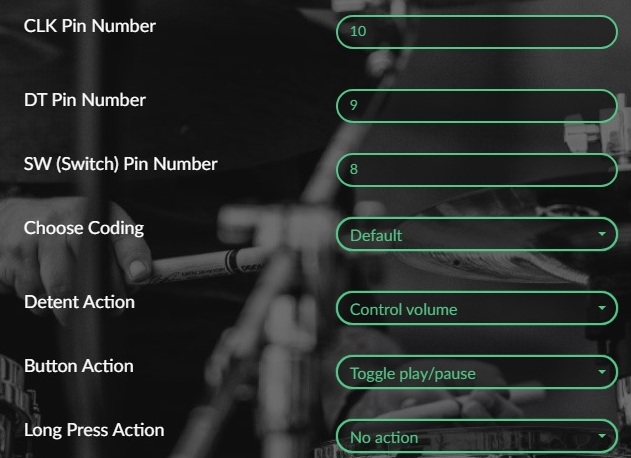
Pin numbering is determined by the BCM tab
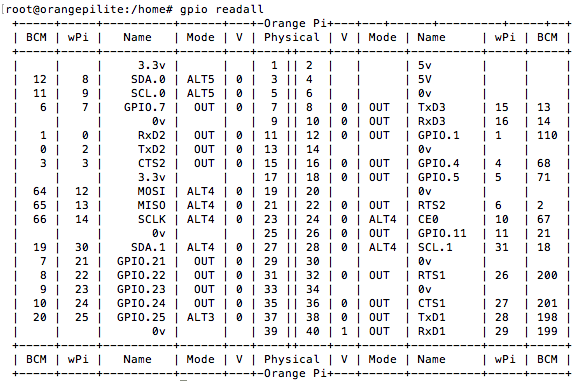
VCC -3,3V
@Radiomanoff Thank you!
I bought the display, installed pydpiper and everything worked.
I bought a blue display, but I think I should have taken a white one.
Hi, a used Volumio 2.861 image from VyacheslavS it works with audio optput on board Orange Pi Pc.
It works fine, thanks VyacheslavS !
I am trying to make it work with
but no success.
I need some help, please, thanks.
Hello. Check the correspondence of the I2S contacts, according to the diagram
In Raspberry Pi, the I2S interface sits on other pins.
Radiomanoff thanks o lot, i will try
Hi, I’m new to the Volumio ecosystem and I’m using the latest build on a OPI PC with an es9038qm2 i2s connected DAC.
I’ve followed the connections provided in another thread to connect to the hat board (not directly as it has a 40 pins connector compatible with RPI).
I can see the I2S-Master in both aplay and Volumio “Output” configuration, but the later never gives me the opportunity to actually select which kind of DAC I have on the other side of the I2S link : am I missing something here (configuration ? link ?).
Thanks for your help !
